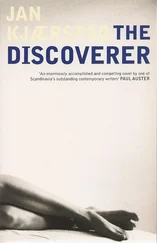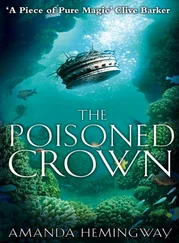It is a shameful admission to have to make, but Jonas knew next to nothing about ‘Dr. Hansen’. On the whole I suspect that if you were to stop a representative selection of Norwegians in the street and confront them with the name ‘Dr Hansen’, you would receive a lot of strange responses. If you said ‘Dr Armauer Hansen’, more people would probably be able to place the name. Jonas for his part had only the vaguest notion of who Gerhard Henrik Armauer Hansen was. Leprosy was something one associated with Jesus and RI classes in grade school. Only once or twice in his life had he come across the name of the Norwegian doctor who had ‘discovered’ the lepra bacillus, for all the world as if he were some sort of explorer and the lepra bacillus an unknown continent, not to say a planet, a bit like the moon.
Only now, when brought face to face with a stamp that was clearly intended as a tribute to this Dr Hansen issued, what is more, by a country that contained a seventh of the world’s population, did Jonas begin to take a greater interest in his countryman. Armauer Hansen was obviously a byword, particularly in countries that were still dogged by poverty and disease, and Jonas soon found that in those parts of the world, ‘Dr Hansen’ had had both streets and research institutes named after him.
Thanks to that little stamp on a letter from India, Jonas came to entertain a certain respect for Armauer Hansen and, over the years, he read every little piece he came across on this man’s life and work. But even this does not entirely explain why the programme on Armauer Hansen in the Thinking Big series should have been such a success — the distinctive pulse and intensity of the programme must be attributed as much to Jonas Wergeland’s own confrontation with a fatal illness. After his incomprehensible and indescribable experience on that mountain in the Sinai desert, he had conceived an almost fond interest in the body’s mysterious powers — or continents, to stick with the metaphor of the research scientist as an explorer.
I have to admit that I find it hard to describe the television programme on Armauer Hansen, because it has so much to do with form. To say that Jonas built the programme around the key story in Armauer Hansen’s life — a perfectly ordinary visit to a bookshop in Vienna — does not tell you much; for one thing it goes no way to explaining why that particular scene should have been perceived by the viewers as the high point in an electrifying psychological thriller.
This seems like an apt juncture at which to bemoan the Norwegian attitude towards experimental, or perhaps I should say, investigative art: any and all art forms which, to a greater or lesser degree, generate something new or different. More than any other people, the Norwegian nation appears to have a fear of such a thing that seems, from an objective point of view at least, rather comical. I mean, what is one to make of a professor of ethics from the faculty of theology attacking the English playwright Harold Pinter’s rather intriguing play The Lover — staged in Norway back in the sixties — by maintaining that the majority of people are incapable of discerning the artistic merits of warped and morbid works by eccentric writers, and that this play could only be regarded as part of the general social decline, dealing as it did with married couples and infidelity? This does, however, show that, when you come right down to it, the average Norwegian does not regard avant-gardism in the arts as ‘incomprehensible’, but as a clear sign of immorality . As something decadent. I think this stems from the overweening Norwegian need to feel secure. Anything that deviates from the norm is interpreted as a threat to this security. Why else would someone read an unconventional poem from the lectern in the Stortinget, the Norwegian parliament, to be met with jeers and derision? And where else but in Norway could one envisage members of the literati ever bringing a ‘lawsuit’ against the movement known as modernism, a ‘lawsuit’ which, I grant you, was not really meant to be taken too seriously but which, if one reads the prosecutor’s statement, betrays a genuine indignation and outrage and, above all else, moral condemnation, as if ‘modernism’, a literary movement that has in due course become a quite conventional and respectable literary style, were actually a criminal offence deserving of punishment.
One of Jonas Wergeland’s greatest claims to fame is his pioneering work within the medium of television as an art form. For, impossible as it may seem, he succeeded — to begin with at any rate — in introducing Norwegian viewers to a new and provocative brand of television aesthetic in such a way — and this is the really remarkable part — that the usual obligatory, outcry never materialized. This seems even stranger when one considers that through his chosen form Jonas Wergeland was constantly reminding the viewer that these were television programmes, created by means of cameras and lighting, edited according to a highly subjective and somewhat strange concept. Jonas Wergeland was the first person in Norway to really exploit to the full the whole range of techniques that modern television had at its disposal. On closer inspection of Thinking Big one can see how the whole series is coloured by unorthodox cutting, deliberate fluctuations in sound levels and camera movements the like of which had never been seen before, together with striking and frequently too warm lighting effects, and ample recourse to swish pan, shock zoom, time lapse, speeded-up and slow-motion film, jump cuts, keying, split-screen and all the other devices which there is no point in going into here because within the next few years such techniques will, for one thing, have become quite common and, for another, have been supplanted by fresh options, new terms. The point I am trying to emphasize is how innovative, how different , Jonas Wergeland’s programmes were at the moment when they first flashed into all those thousands of homes.
That television viewers, for once, accepted this new imagery more or less without demur says something about the patently high technical standard of the programmes, but it also says something about how well the form matched the content and how that same form heightened the sense of what was at stake for the people portrayed in the Thinking Big series. In the case of Armauer Hansen, for example, it was not unreasonable to adopt the form of the post-mortem itself, pathology being Armauer Hansen’s great passion. Added to which, the essential form of a post-mortem involves the search for a cause, one which is forever opening up . As many will remember, the first half of the programme was presented as a psychological thriller with a number of scenes shot in grainy black and white in which Armauer Hansen was shown being plagued by recurring hallucinations; scenes set either among the lepers at St George’s Infirmary or at the leprosarium in Bergen, where he was a senior physician. Jonas made frenetic play with a couple of details from what is now a memorial room to Armauer Hansen in Bergen — nightmarish, almost surreal, sequences with shots of the lepers staggering towards Armauer Hansen, all sores, knots and deformed limbs, and Hansen himself ‘cutting’ his way out time and again by applying his scalpel to the camera lens and slowly slicing downwards with the effect of ‘incising’ from one shot to the next — a detail which many viewers found as effective, not to say revolting, as the scene in Luis Buñuel’s classic film Un Chien andalou , involving the dissecting of a donkey’s eye. In these scenes, the viewer was also presented with the contemporary explanations for the causes of leprosy, delivered in an authoritarian tone by faces viewed through a fisheye lens: the belief that leprosy was a punishment from God and the conviction that it was either inherited or the result of very bad living conditions. The overall form of this first half of the programme — the all-pervading cold, blue light, the extreme closeups, the unusual camera angles, particularly the low-angle shots — was intended to show how Armauer Hansen felt himself to be bogged down, stuck in a false line of thought. Until at last he succeeded in ‘incising’ his way through the camera lens and out into Vienna and again the whole form was indicative of change, as the pulse slowed down and everything opened up, this last emphasized by the use of extra wide-angle shots and lens filters that turned the light to gold.
Читать дальше












